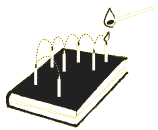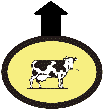The star of Wednesday evening's event in Durham Town Hall was not any of the writers present, but the book itself; everyone - including the supporting cast of writers! - wanted to examine it, to turn its dazzling pages, to see if they could read its curving lines of text.
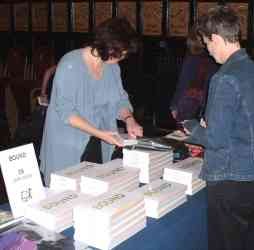
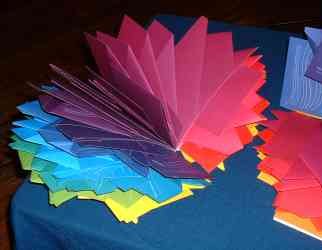
As published, in neat stacks on the bookstall, it looked conventional enough; wider and shallower than the average book, but with nothing to indicate the vivid chrysanthemum of paper that would result from reading the five stories it contained. Claire Malcolm explained that New Writing North's purpose in working with Creative Partnerships Sunderland & Durham to commission this "exploding rainbow" had been to demonstrate the creative potential of Durham in a creative way; writers had been asked to write about creativity in a way which might open possibilities to young people who had not previously thought of themselves as creative.
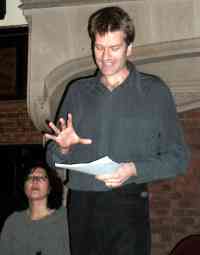 The first speaker was
Charles Fernyhough, an incomer for whom Durham represented creativity itself, since his move to the county coincided with his attempt to become a full-time writer. He discovered that the job involved periods of writing, periods of gazing out of the window, and frequent visits to the pub. His story Joyful Lagers of the World pays tribute to the pub as a stimulus for creativity.
The first speaker was
Charles Fernyhough, an incomer for whom Durham represented creativity itself, since his move to the county coincided with his attempt to become a full-time writer. He discovered that the job involved periods of writing, periods of gazing out of the window, and frequent visits to the pub. His story Joyful Lagers of the World pays tribute to the pub as a stimulus for creativity.
Fadia Faqir had travelled even further to discover that she was "a Durham writer". "I am an Arab Muslim woman living in the West," she said, "and each of these labels brings a challenge: Who am I?" Her story The Separation Wall reflects this multi-layered identity and the fractured nature of the book as a physical object, since its narrative is set in three different places and times: Durham in 2004, Magna (Carvoran) on Hadrian's Wall, 197 - 217 AD and Kalkelie on the West Bank, where Israel is building its modern-day security wall.
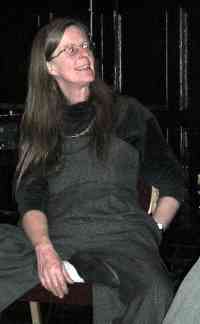 The third and final adoptive north-easterner was Sara Maitland, who has lived above Stanhope, in upper Weardale, for the last five years. A visiting friend had remarked on the view from her window as "twenty miles of absolutely nothing!", and it was this which had drawn her to the location, "the mixture of natural wildness and painful industrialisation". She had valued the commission for the freedom it gave her to write something of her own choosing, and given this free hand had decided to write about Saint Cuthbert After Life, trapped in his miraculously uncorrupted body, wanting to decay, dissolve and be free. Her narrative looped and folded, reflecting the form of this extraordinary book - although she read, like her colleagues, from a plain paper text.
The third and final adoptive north-easterner was Sara Maitland, who has lived above Stanhope, in upper Weardale, for the last five years. A visiting friend had remarked on the view from her window as "twenty miles of absolutely nothing!", and it was this which had drawn her to the location, "the mixture of natural wildness and painful industrialisation". She had valued the commission for the freedom it gave her to write something of her own choosing, and given this free hand had decided to write about Saint Cuthbert After Life, trapped in his miraculously uncorrupted body, wanting to decay, dissolve and be free. Her narrative looped and folded, reflecting the form of this extraordinary book - although she read, like her colleagues, from a plain paper text.
In the absence of Paul Magrs, it was left to Wendy Robertson to represent the rooted north-easterner, "hard-wired", as she put it, "for my identity in Co. Durham." Despite having "lived in Co. Durham for three generations", she did not herself move to Durham until the age of nine. This made her both an insider and an outsider, a valuable position for a writer to occupy. Asked to write something rooted in the region, she knew at once she wanted to write about Sunderland, and her initial thoughts were of the days of the Yorkshire Ripper, and the hoax tapes sent to the police by someone claiming to be the Ripper; she recalled the chill she felt when she recognised his accent as that of Hendon, the area of Sunderland in which she worked. Yet, in a fascinating revelation of her own creative process, she explained that she had discarded this idea as too big for a short story, something she would want to develop into a novel.
 Fortunately, another idea was sparked by a dream: "I was in a kitchen with a glass ceiling. A body came crashing down, but I couldn't say anything because I had an egg in my mouth." And this was indeed recognisably the story she began to read, yet somehow in the writer's treatment the illogic of the dream was transformed into something at once surreal and totally convincing.
Fortunately, another idea was sparked by a dream: "I was in a kitchen with a glass ceiling. A body came crashing down, but I couldn't say anything because I had an egg in my mouth." And this was indeed recognisably the story she began to read, yet somehow in the writer's treatment the illogic of the dream was transformed into something at once surreal and totally convincing.
The writers had not seen the cpmpleted book before that evening, and were as fascinated by it as the audience: Sara Maitland, for example, was eager to find out whether people would be able to read her story in this format. If there was a hole at the heart of the evening, it was the absence of the artist Tanya Axford, and indeed of any speaker from SUMO design, who put the book together to the artist's specification. But the absence of answers did not damp down questions, which made for much stimulating speculation on the nature of the book.
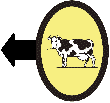
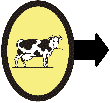
This website is maintained by Cornwell Internet
as part of their sponsorship of the Literature Festival
Last update: 11th October 2004

